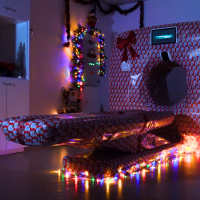We Provide American Medical Standards World Class Medical Staff State of the Art Facilities Prestigious Medical Services Cutting Edge Technologies Patient Centeredness
What is it?
A computerized tomography (CT) scan produces cross-sectional images (slices) of organs, bones and blood vessels. A CT scan provides far more detailed images than a simple X-ray and can be used to quickly examine people with internal injuries. It is often used to plan medical, surgical or radiation treatments.
How does it work?
This is a noninvasive procedure, allows the doctor to diagnose various diseases or injuries. As you lie on the movable table, you are passed through a ring-shaped scanner. This allows for multiple X-ray images to be taken from different angles around the body, creating detailed cross-sectional images of the area affected by the disease or injury.


What diseases/injuries
Neurological
Respiratory
Musculoskeletal
Orthopedic
Gastrointestinal
Gynecological
Cardiac
Urinary
Oncological
What are the risks?

CT Scans are completely safe when operated by the hands of professionals. However, there are minor risks which should be considered:
1.Radiation exposure
The amount of ionizing radiation you are exposed to is greater than that of an X-ray due to the more in-depth information it generates. The doses of radiation used during CT scans however are low and empirically proven to not cause any long-term harm.
2.Harm to unborn babies
Although radiation from a CT scan is unlikely to harm an unborn baby, your doctor may recommend another type of exam, such as ultrasound or MRI, to avoid exposing the fetus to radiation.
3.Reactions to contrast material
In extremely rare occasions, the contrast material has caused medical problems or allergic reactions. This can be avoided however, by filling out the pre-examination questionnaire we provide.
Overall, CT Scans offer many benefits that far outweigh any minor potential risks.












